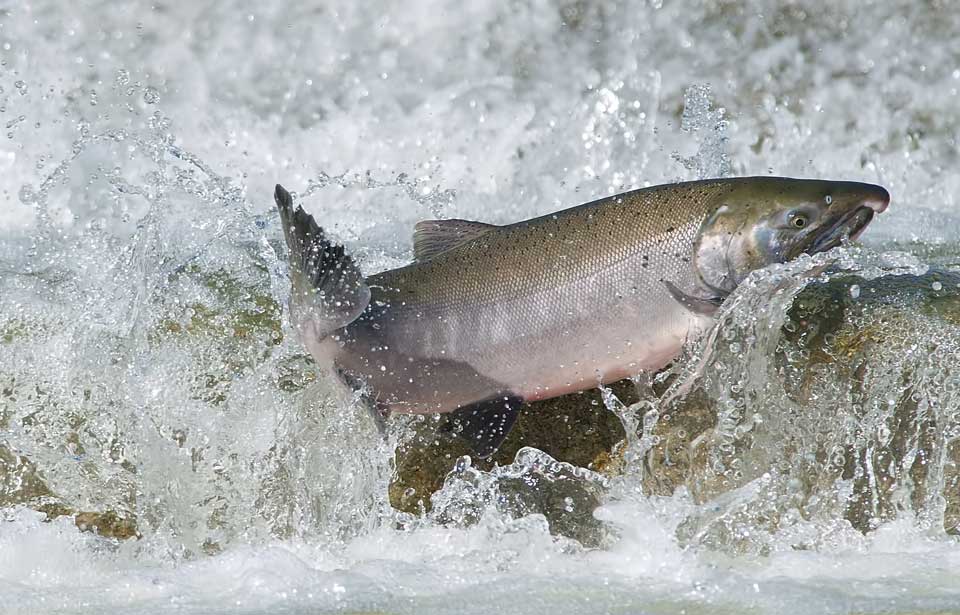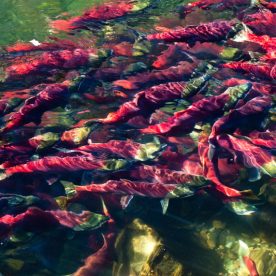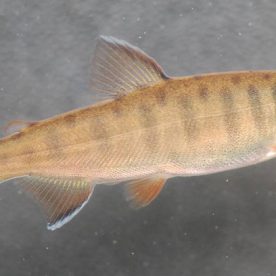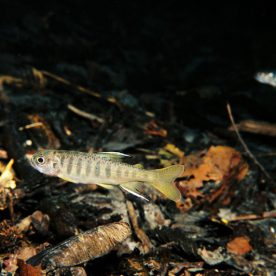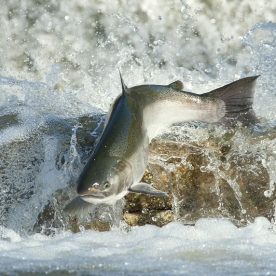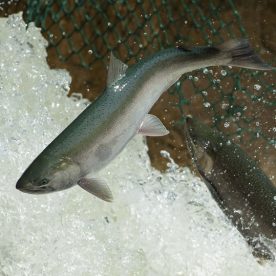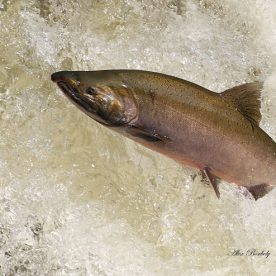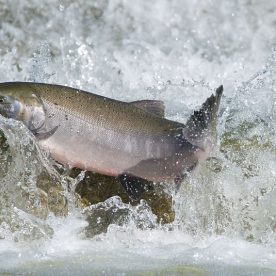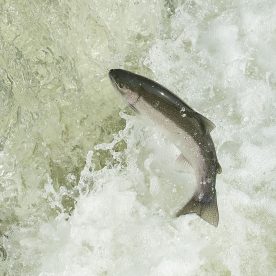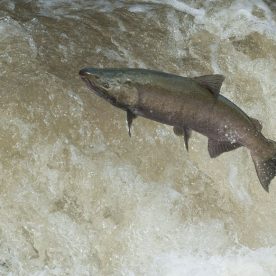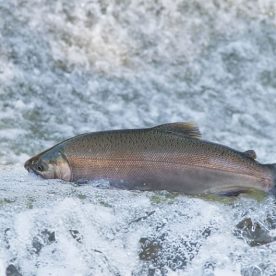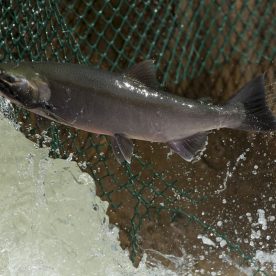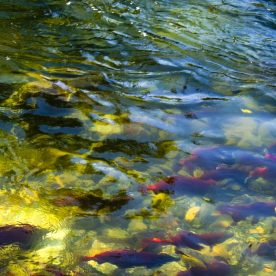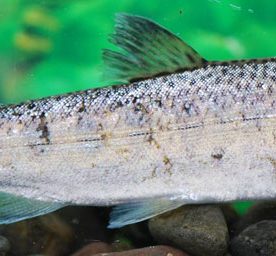Description
Adult coho salmon have silvery sides and metallic blue backs with irregular black spots. Spawning males have bright red sides, and bright green backs and heads, with darker colouration on their bellies. The fish have hooked jaws and sharp teeth. Young coho salmon are aggressive, territorial and often vibrantly coloured, with a large orange anal fin edged in black and white.
Unique characteristics
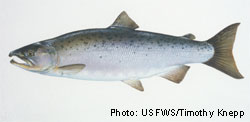 As a population, Interior Fraser River coho salmon are descended from now-extinct populations of coho that survived the ice age by migrating to the upper Columbia River. The Interior Fraser River population is genetically distinct from coho salmon that live in the lower Fraser River watershed.
As a population, Interior Fraser River coho salmon are descended from now-extinct populations of coho that survived the ice age by migrating to the upper Columbia River. The Interior Fraser River population is genetically distinct from coho salmon that live in the lower Fraser River watershed.
Coho salmon return to the Interior Fraser River watershed during fall to spawn. The female turns onto her side and flaps her tail up and down to create a depression—called a redd—in the gravel of the river bed. When the redd is deep enough, the female will lay her eggs. All the while, the female is defended by a dominant male. While the eggs are laid, the dominant male releases sperm into the gravel nest. At times, other males may also deposit sperm. The female then covers up the fertilized eggs with gravel to protect them from predators, and begins to create another redd. Typically, a female will spawn in three to five redds, and lay between 800 and 1,000 eggs at each one. After spawning, the coho salmon defend their redds until they die some three to 15 days later.
Range
The Interior Fraser River watershed includes systems within the Fraser River watershed upstream of Hells Gate in the Fraser River canyon in British Columbia.
Breeding
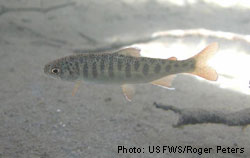 Young coho salmon fry emerge from the gravel the following spring and usually reside in freshwater for a year before migrating to saltwater. Interior Fraser River coho salmon spend 18 months at sea before returning to freshwater to spawn.
Young coho salmon fry emerge from the gravel the following spring and usually reside in freshwater for a year before migrating to saltwater. Interior Fraser River coho salmon spend 18 months at sea before returning to freshwater to spawn.
Conservation
Having rapidly declined since 1996 by more than 60 percent, the Interior Fraser River coho salmon populations are still under threat from shifting marine conditions and deteriorating freshwater habitats. This population is also caught by other fisheries in coastal waters off Oregon, Washington and Vancouver Island, as well as in the Strait of Georgia and in the Fraser River.
The Interior Fraser River coho salmon is designated as endangered by COSEWIC and is under consideration for addition to the Species at Risk Act (SARA).
Several fishery management measures have been in place since 1998, including:
- Various commercial, recreational and First Nations fishery closures and restrictions in the Fraser River and approach areas;
- selective seine fisheries are the only fisheries permitted in the Strait of Juan de Fuca; and
- closure of commercial salmon troll and gillnet fisheries off the west coast of Vancouver Island and Strait of Juan de Fuca during periods of and in areas of Interior Fraser River coho salmon abundance.
- In June 2005, DFO adopted the Wild Salmon Policy which identifies Interior Fraser River coho salmon as a unique “conservation unit” that needs protection.
These measures are modified annually to reflect ongoing changes in the species’ status.
DFO will continue to build on the present signs of recovery for the Interior Fraser River coho by setting clear goals for each fishery based on the principles of the Wild Salmon Policy.
DFO has developed a draft recovery strategy in collaboration with Aboriginal groups, provincial governments, industry and stakeholders.
Additional management measures are being developed through the recovery planning process and implemented only after intensive consultation. Potential recovery measures being investigated include:
- improvements to quality and quantity of shoreline and streamside vegetation;
- reductions in water withdrawals from key areas; and
- restoration of juvenile rearing areas within nursery watersheds.
What can you do?
Interior Fraser River coho salmon will get the protection it needs only if all Canadians work together to reduce threats. Find out more about coho salmon and be aware of human-induced threats. Do your best to reduce these threats wherever possible. Get involved with the Habitat Stewardship Program for Species at Risk (HSP) or another conservation organization.
Resources
Department of Fisheries and Oceans Canada, Coho Salmon
Text:
Department of Fisheries and Oceans Canada with background information provided by Environment Canada in 2004.
Photos:
Timothy Knepp, USFWS
Roger Peters, USFWS



